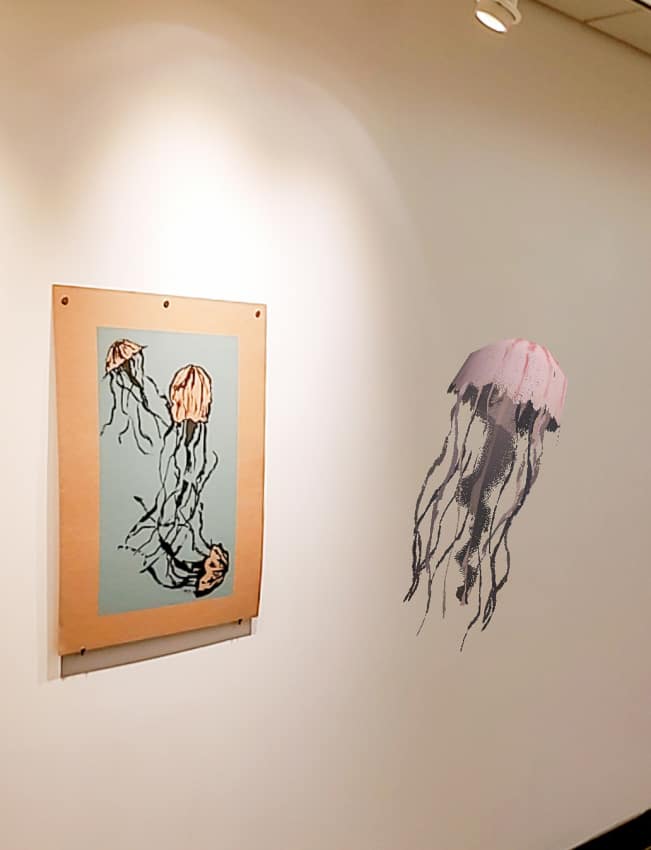
Art has always played a pivotal role in Andrei Feheregyhazi’s life. With the rapidly-growing technology of augmented reality, he is now crafting unique visual pieces magnified with brilliant artwork.
It all started off with the idea for an immersive picture book, Feheregyhazi says.
“I wanted to do a children’s book and I was thinking of doing it in virtual reality. But I felt the virtual reality world was too exclusive so some parents wanting to read a book with their kid couldn’t participate with them,” Feheregyhazi said. “But with augmented reality, you could have more people participating.”
Many of his designs — which can be viewed on his website — follow a mixed-media theme heavily influenced by steampunk design. He draws his inspiration from this style of art.
“I’ve been fascinated with steampunk technology and things like that for quite a while so the steampunk designs come from that,” Feheregyhazi said.
The incredible detail in his artwork is brought together by a complex process that may take anywhere from one week to one year. The idea phase can go by quickly but the painting, scanning and computer design takes longer. Creating the augmented reality can take anywhere from days to a month.
One of the reasons Feheregyhazi is so interested in fusing art with augmented reality is the level of engagement it allows. Speaking of North American art, he says “for the most part, it’s like the art is [over there] and you’re here.” Immersive artwork allows for meaningful connections that go beyond the viewer and the work.
However, with interactive artwork comes the fear of damage, which is where augmented reality comes in.
“Something I’ve always wanted to foster is people moving into a space and actually feeling the ability to engage with art, and [with augmented reality], you can engage with art without damaging it,” Feheregyhazi said. “You don’t need to worry about liability on value of things.”
His ideas are fuelled by the prospects of art and AR in the future.
“I think in some ways it’s limitless. I’ve always wanted to … have [viewers] have an experience that expands into the space around them,” he said. “With the t-shirts, you can be a character in and move around that scene.”
Feheregyhazi is also specifically interested in newer AR technologies like Microsoft’s mixed reality smartglasses, HoloLens, for interactive art exhibits instead of phones as they only allow for so much engagement with an artwork.
As far as resources go, Feheregyhazi says acquiring them is “relatively different” depending on the project but to do augmented reality is “relatively easy.”
The digital segment of his projects is cost-free in terms of experimentation. As Feheregyhazi graduated with degrees in art and art history from the University of Saskatchewan, the programming skills required to play with AR comes from his own personal study.
“I just watched free YouTube videos to learn the very basics,” Feheregyhazi said. “If you’re willing to put the time into researching and finding, you can almost learn anything from the internet these days, but there’s a lot of times where it might take me a few weeks or a month to learn.”
As a maker with ambitious ideas, Feheregyhazi emphasizes the importance of motivation and putting work into your art.
Referring to learning resources, Feheregyhazi draws from his own experience as a student and jokes that “I’ve harassed profs in departments I’ve never been in.” Talking to professors about interesting ideas can be helpful since they can provide more resources for you to look into.
For future plans, Feheregyhazi says he has plenty of ideas. Some of his main goals are expanding his AR app BrellaBot and creating a t-shirt line that turns you into different characters such as a penguin, lion or dinosaur.
Feheregyhazi is hoping to build up user-generated content with people creating short films out of his characters and is looking to expand his augmented-reality agenda to be a team-based project, a goal that goes well with his increasingly ambitious ideas.
“Murals are my big thing,” Feheregyhazi said. “Large scale artwork that can encompass public spaces that people can move into and really see, engage with their phones or any kind of technology and just be transported to a new world.”
—
Fiza Baloch
Photo: Supplied by Andrei Feheregyhazi.